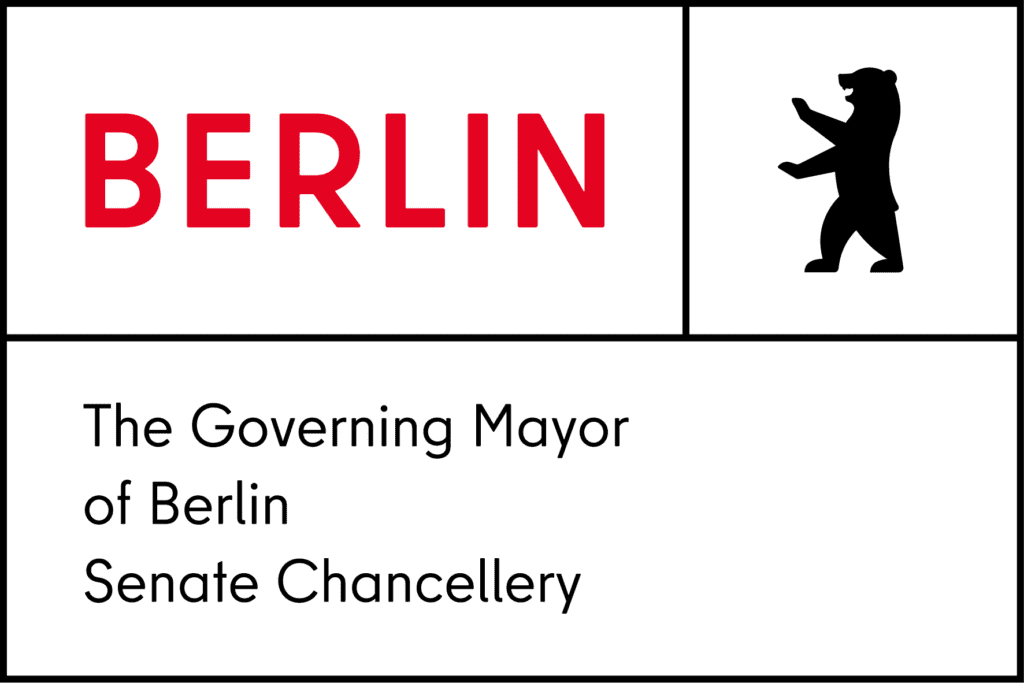At 5:30 p.m. sharp, the first corks popped in our foyer at CityLAB Berlin, and a few minutes later numerous curious guests were already streaming through our halls: The LABissage on Feb. 23 was an unforgettable evening, where we proudly presented our four new exhibits to the public. We are overwhelmed by the positive feedback and would like to take this opportunity to thank everyone who attended.
In our exhibition, new meets old and the city of the future meets the former officers’ hotel at Tempelhof Airport. The interactive exhibits in our exhibition not only offer a glimpse into the projects and products of CityLAB and our circle of partners, but also includes artworks and diverse inspirations to get us reflecting on the design of our city and the potential of open data.
In this post, we give you a glimpse into a very special evening – and let pictures do most of the talking.
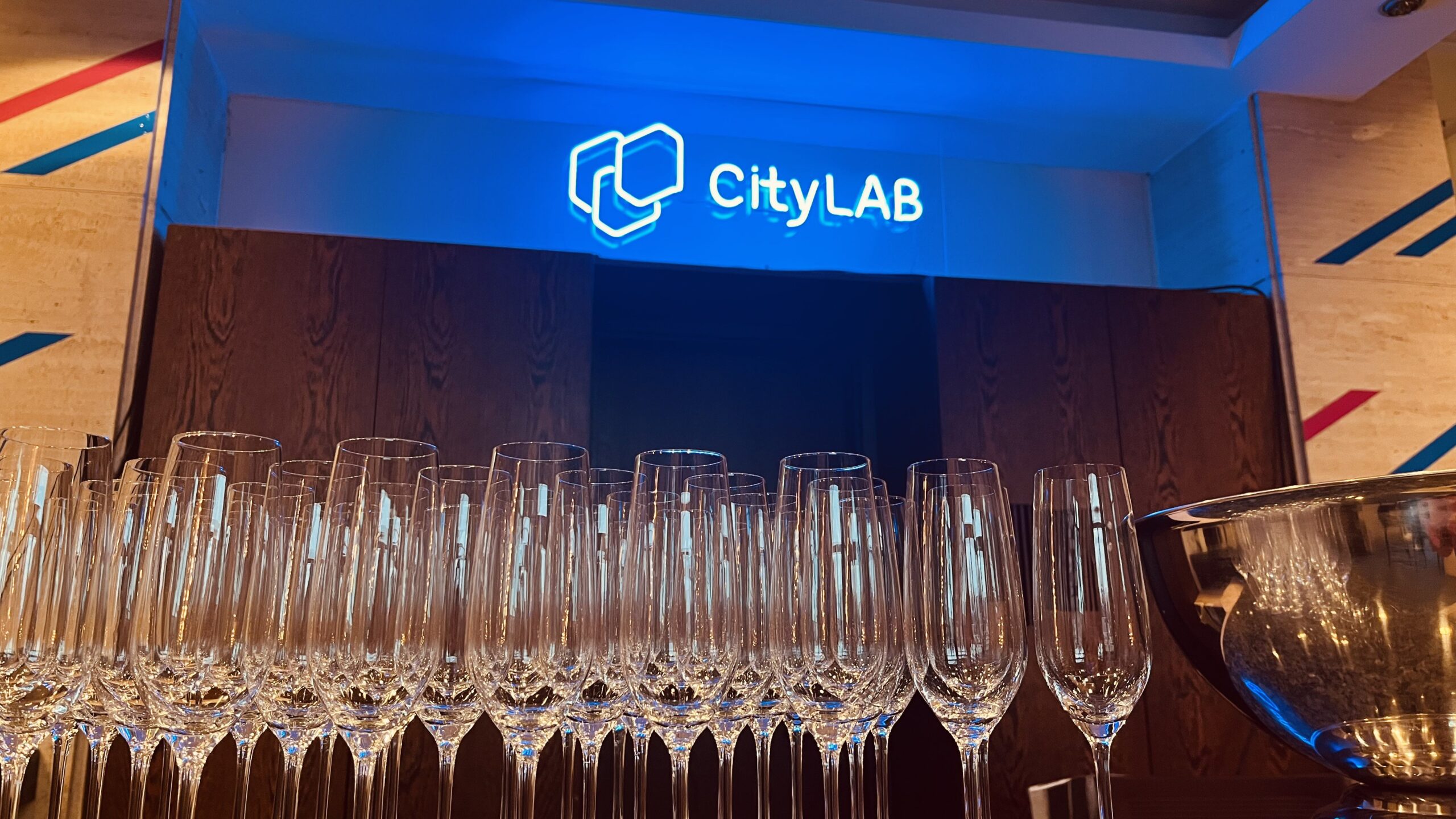
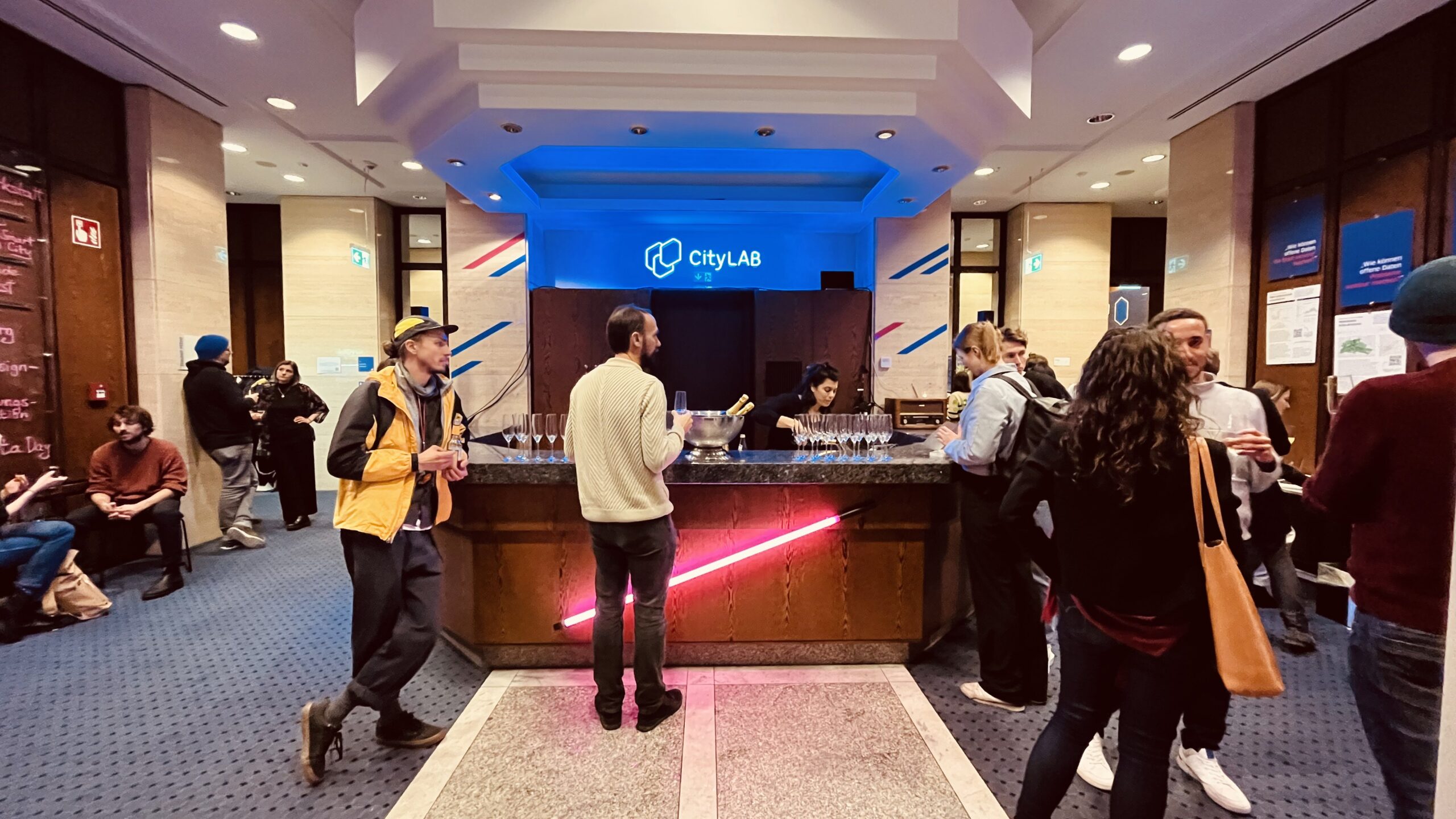
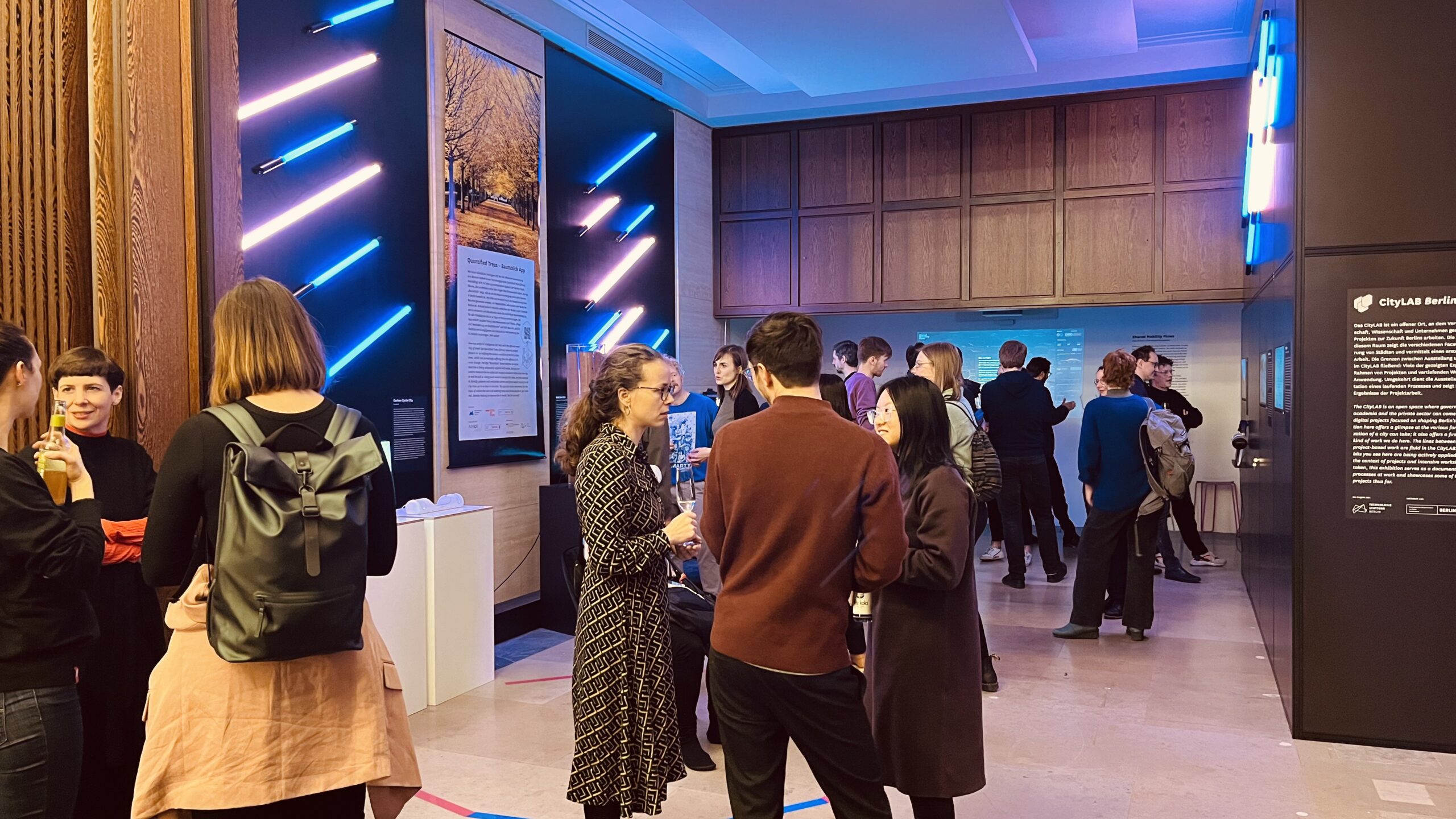
Our new exhibits
Neonature: Carbon Cycle City
Neonature is a creative partnership between illustrator Johannes Fuchs and biodesigner Kassandra Huynh – a discipline at the intersection of art and biotechnology. Together they create speculative design and proactive art for a “neonatural” planet of the future, where humans and nature live together in balance. In Carbon Cycle City, they present a vision for the future of a carbon-neutral city that transforms toxic carbon emissions into valuable resources. The story is told of Berlin as a city where carbon is captured, recycled, stored, and transformed into forms that are friendly to life. Through 360° illustration with accompanying audio narratives of visionary and emerging technological initiatives, it aims to show how every member of our society can benefit and contribute to transforming Berlin into a carbon neutral city.

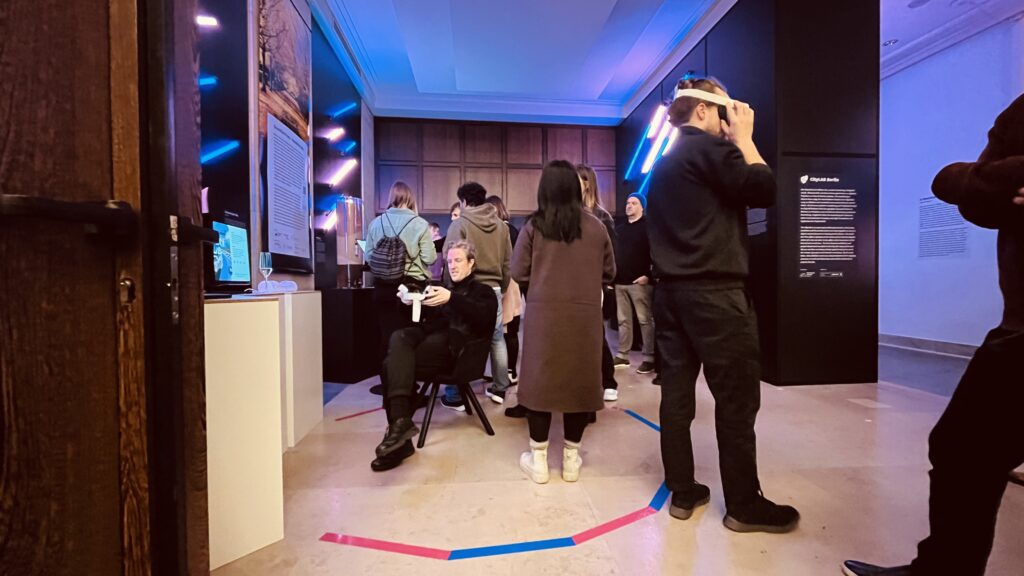
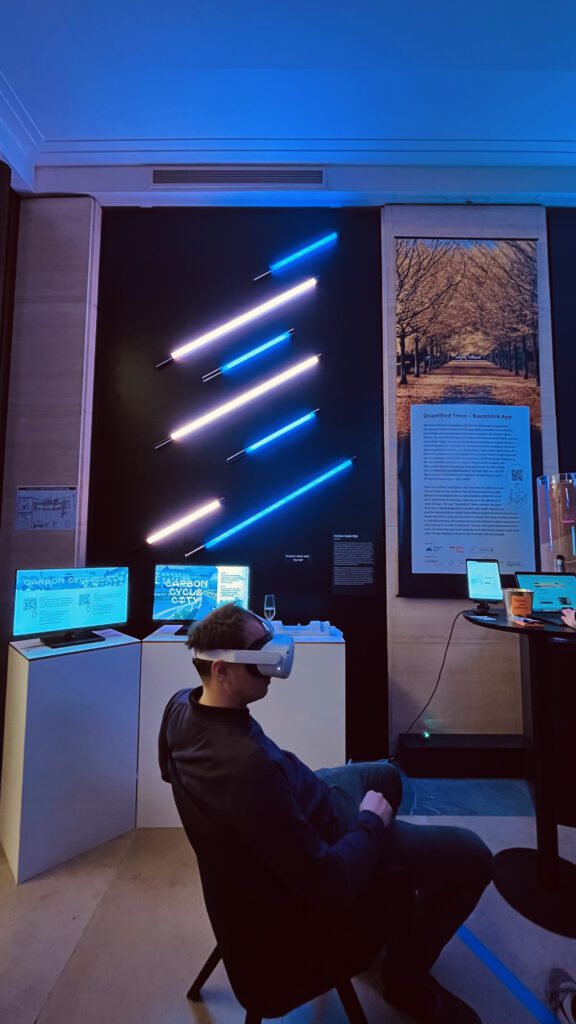
Qtrees: The Tree View App
How can artificial intelligence (AI) help with the efficient watering of trees? The Quantified Trees (QTrees) research project focuses on the quantifiable condition of Berlin’s urban trees, which are increasingly suffering from the effects of climate change. The app new Baumblick shows how the water supply of each tree in Berlin is doing. Sensors can be used to measure the suction of a tree to determine how dry or wet the soil is. Using an AI model, we try to identify patterns in the data sets and predict the current and future water supply for all city trees up to 14 days in advance. The app also raises awareness on the topic of urban tree care and irrigation and invites people to get involved with urban trees, thereby contributing to the improvement of the AI model. The app was presented on a test basis at the LABissage and is scheduled to be released in the coming weeks. We will of course keep you updated on this.
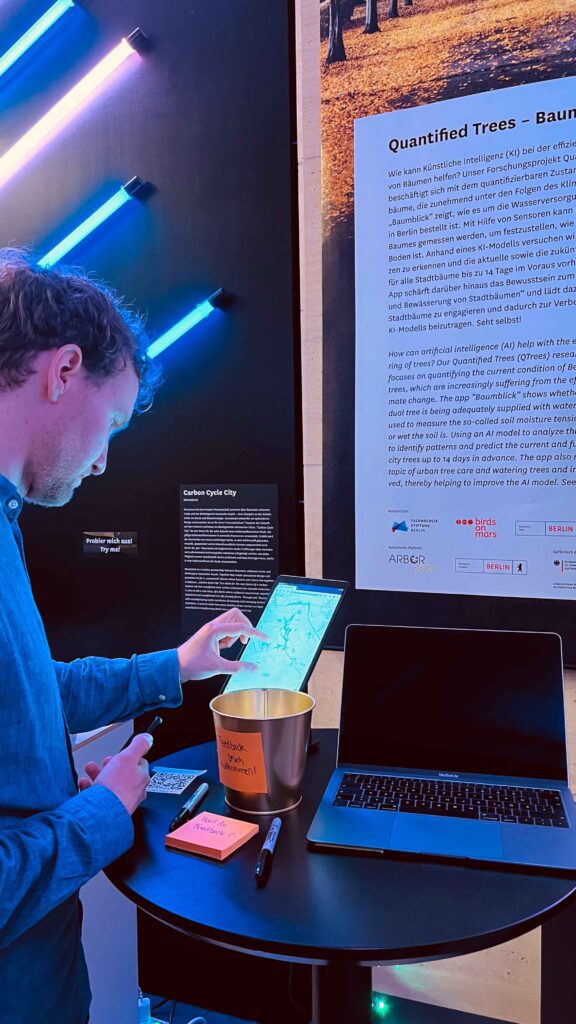
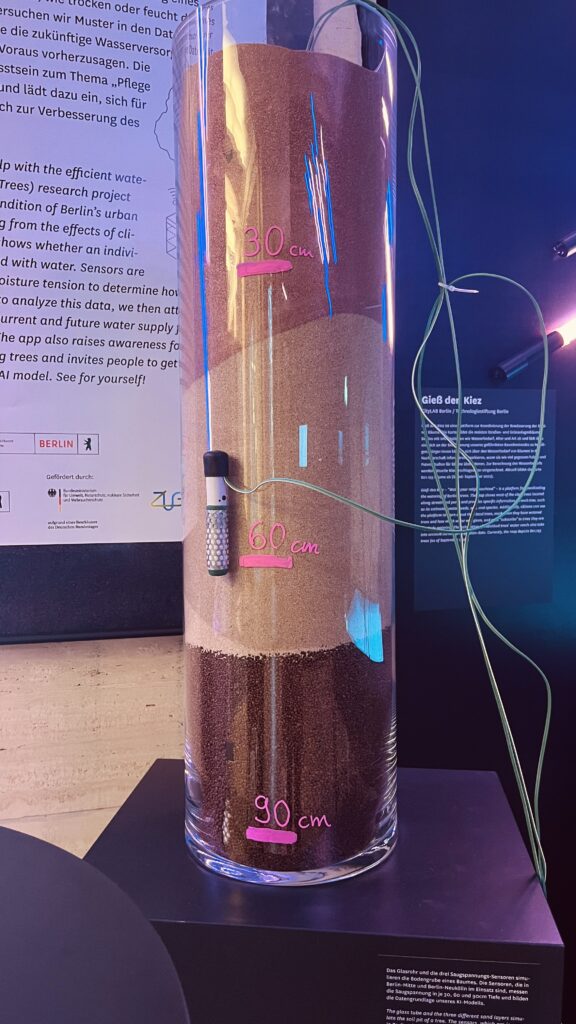
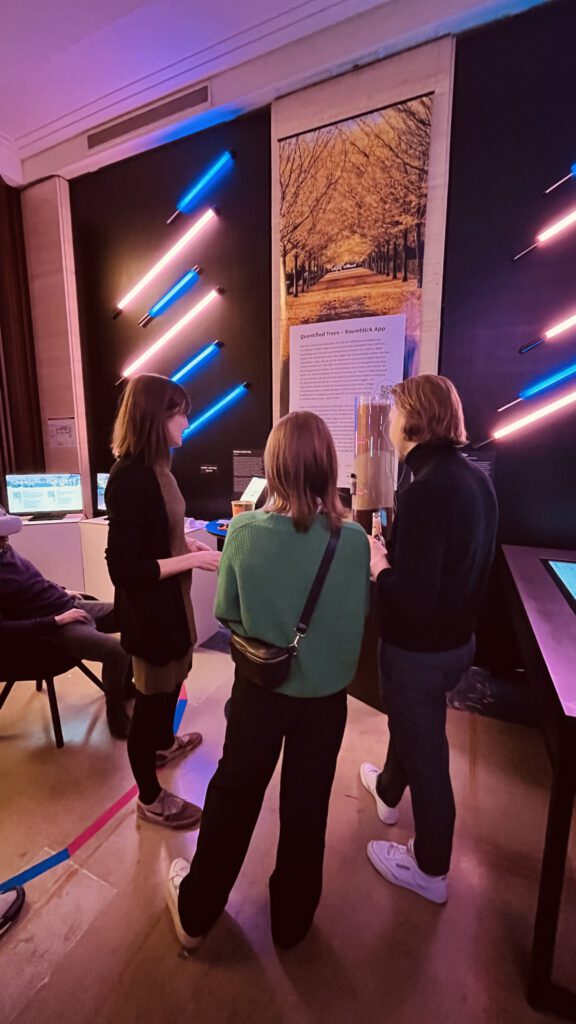
Green, Greener, Bike Lane Flow
In our annual Summer School, students investigate the prerequisites and effects of new technologies on different aspects of the living space “city”. In 2022, researcher spirit was in demand when it came to further developing a green wave assistant – the Bike Lane Flow. The so-called “green wave” is designed to help cyclists reach their destination more smoothly and safely. Using approaches from physical computing as well as machine learning on microcontrollers and accompanied by workshops and impulse lectures, the students have created a prototype based on the open source model Leezenflow from Münster. This has already proven successful in practice. The Bike Lane Flow can connect to the Internet, display traffic light phases, and use its sensors to hear and see things that would otherwise remain hidden – making it a friend to all road users!
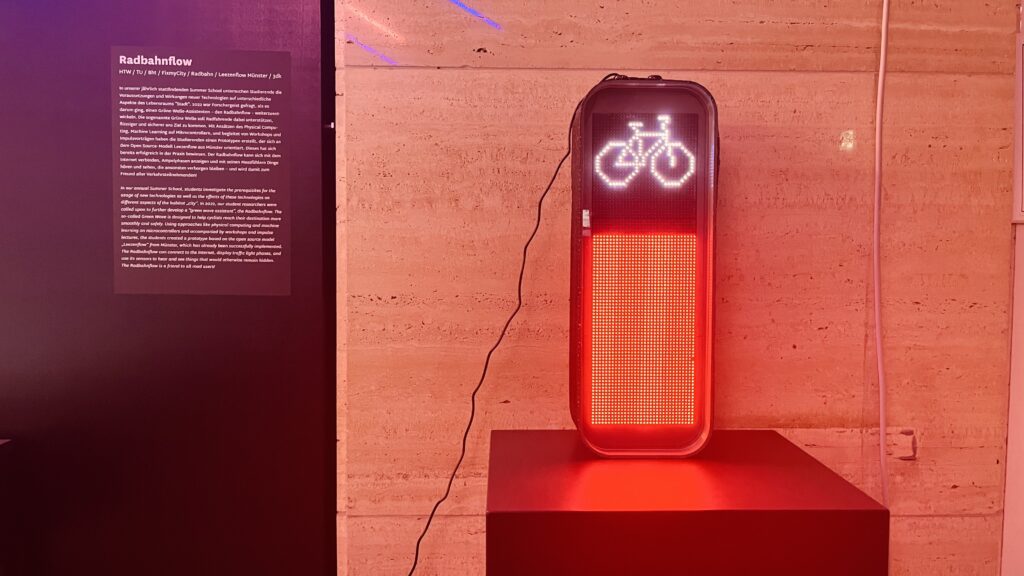
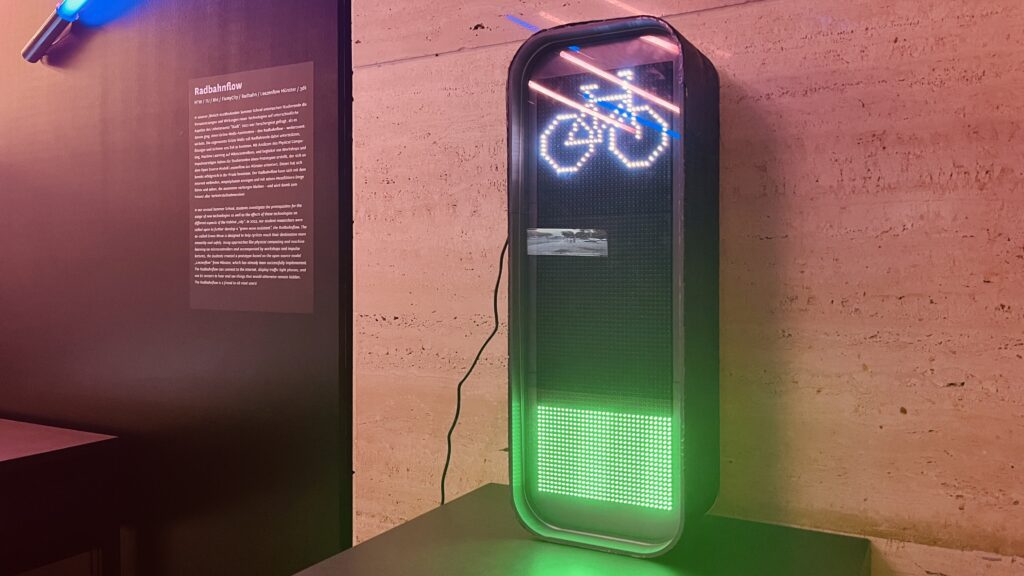
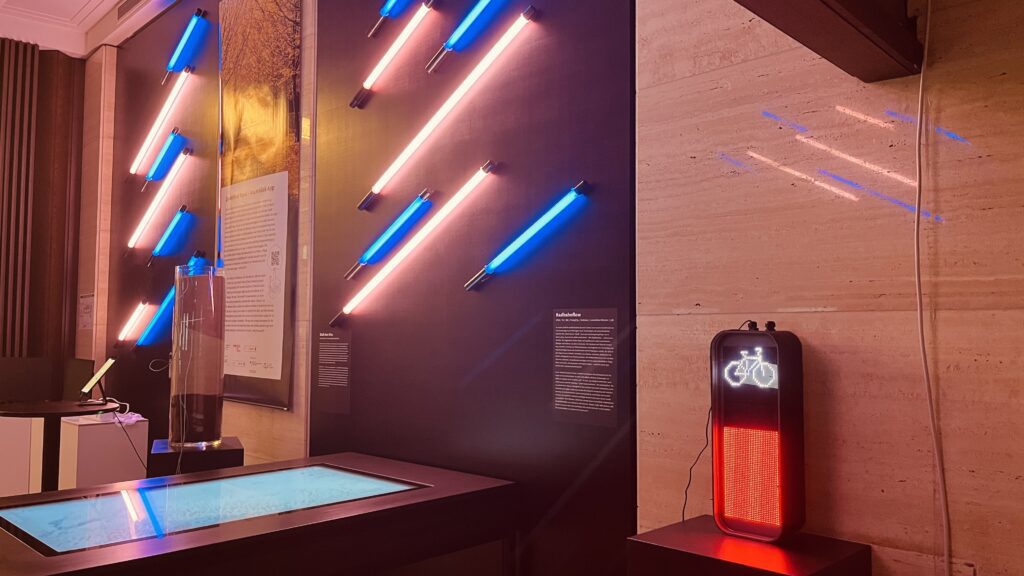
Visual Utopias and the free streets manifest
In spring 2020, Hamburg-based artist Jan Kamensky started the project of his utopian animations. The abandoned streets at the beginning of the Corona pandemic inspired him to playfully transform car-dominated streets into people-friendly places. The video shows the transformation of Skalitzer Straße and Karl-Marx-Allee in Berlin. The play with utopia has a decisive function: after the viewers have had a glimpse of what could be, they return to reality with a sharpened view. The project thus represents an invitation to reflect on our present. Not the feasibility of the visualization, but the expansion of consciousness is in the foreground for Jan Kamensky. Nevertheless, Kamensky would be pleased about a realization of his ideas. All animations and more about the project can be found at www.visualutopias.com.
On many streets in Germany, however, the so-called “traffic turnaround” is far from becoming a reality. How could it, when cities and people often already lack the basis for change: the power of imagination! How do we design cities in better harmony with people and nature? How do we bring more justice into urban planning? How do we make streets part of a productive public space again? With the “Free Streets Manifest”, the partner alliance between paper planes e.V, the Science Center Berlin and the Technical University Berlin aims to inspire and completely rethink urban space in Germany beyond the car within the framework of seven theses.

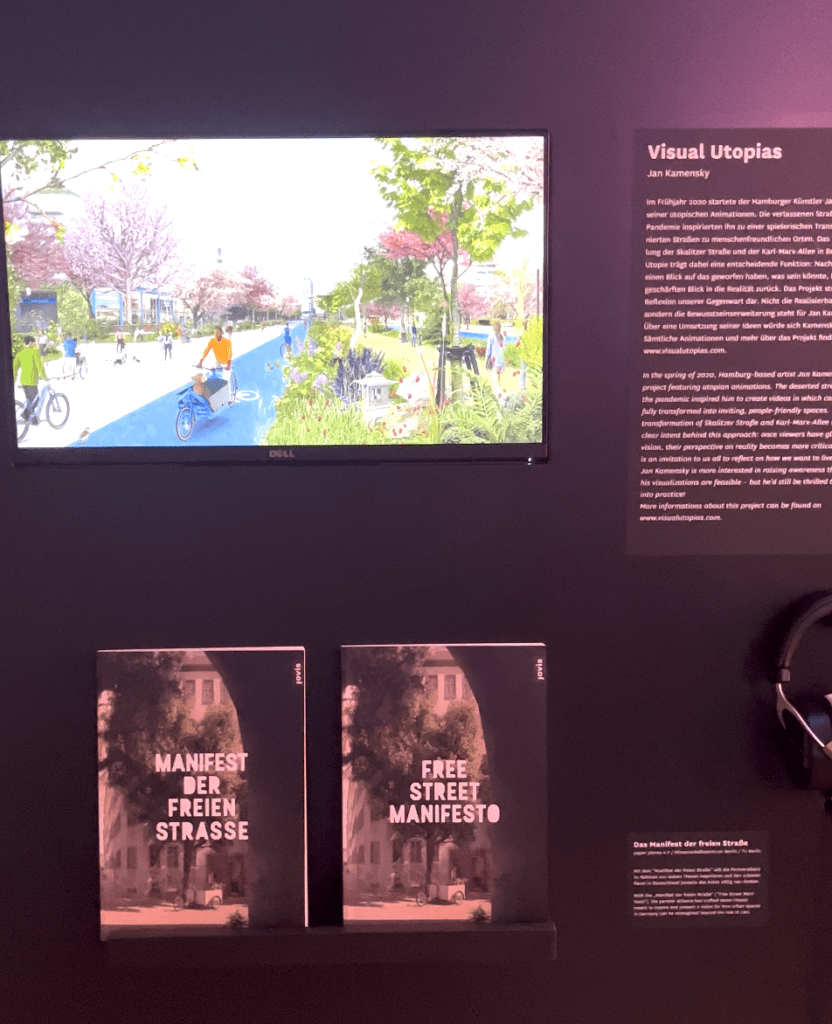
Two creative approaches that have the same goal: car-free streets in Berlin!
Let’s get: physical!
At the same time, the Kunsthochschule Weissensee celebrated the closing night of their exhibition Let’s get: physical! Under the approach of “data physicalization”, students developed exhibits that link physical and digital interaction. The aim was to promote users’ understanding of personal data and thus enable them to deal with it in a more informed way. Students from the Department of Computer Science at Freie Universität Berlin and the Department of Product Design at the Weißensee Academy of Art and Design jointly presented the results of their project work at CityLAB as part of the interdisciplinary course “Coding IxD“. Coding IxD an annually recurring project that has been taking place since 2015 in cooperation between the Human-Centered Computing research group led by Prof. Dr. Claudia Müller-Birn (Freie Universität Berlin) and the Embodied Interaction group led by Prof. Carola Zwick and Prof. Judith Glaser (Kunsthochschule Berlin-Weißensee).


How can we make data tangible? The students presented their results for a week at our CityLAB.
You would like to have a look at our new and permanent exhibits? Then come by to our exhibition and book a time slot including a free guided tour. We are looking forward to seeing you!
